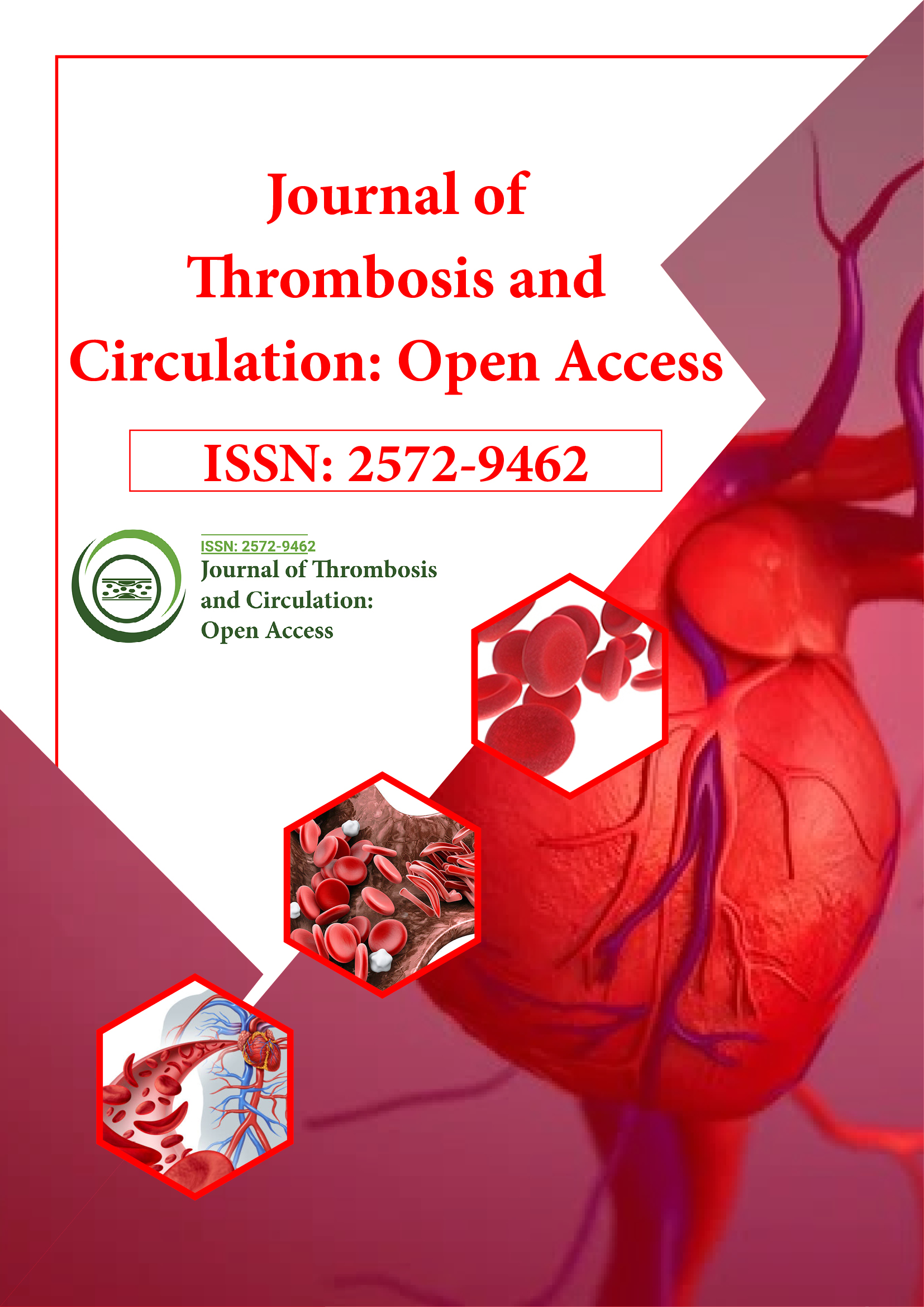Indexed In
- RefSeek
- Hamdard University
- EBSCO A-Z
- Publons
- Google Scholar
Useful Links
Share This Page
Journal Flyer

Open Access Journals
- Agri and Aquaculture
- Biochemistry
- Bioinformatics & Systems Biology
- Business & Management
- Chemistry
- Clinical Sciences
- Engineering
- Food & Nutrition
- General Science
- Genetics & Molecular Biology
- Immunology & Microbiology
- Medical Sciences
- Neuroscience & Psychology
- Nursing & Health Care
- Pharmaceutical Sciences
Commentary - (2025) Volume 11, Issue 2
The Interrelationship Between Diabetes Mellitus and Thrombotic Risk: A Vascular Perspective
Isabella Mendes*Received: 30-May-2025, Manuscript No. JTCOA-25-29341 ; Editor assigned: 02-Jun-2025, Pre QC No. JTCOA-25-29341 (PQ); Reviewed: 16-Jun-2025, QC No. JTCOA-25-29341 ; Revised: 23-Jun-2025, Manuscript No. JTCOA-25-29341 (R); Published: 30-Jun-2025, DOI: 10.35248/2572-9462.25.11.306
Description
Diabetes mellitus is a chronic metabolic disorder characterized by persistent hyperglycemia, insulin resistance and a constellation of metabolic disturbances. Beyond its well-known role in microvascular complications such as retinopathy, nephropathy, and neuropathy, diabetes significantly increases the risk of macrovascular disease, particularly thrombosis. The diabetic vasculature is highly susceptible to endothelial dysfunction, inflammation and a prothrombotic state, all of which converge to elevate the likelihood of both venous and arterial thromboembolic events. As diabetes incidence rises globally, understanding and mitigating its impact on thrombosis becomes a public health imperative.
The thrombotic risk in diabetes is multifactorial and involves complex interactions between metabolic abnormalities and vascular biology. Chronic hyperglycemia leads to the generation of Advanced Glycation End products (AGEs), which damage endothelial cells, impair Nitric oxide (NO) production and increase oxidative stress. This compromised endothelium becomes more adhesive to leukocytes and platelets, initiating a pro-inflammatory and pro-coagulant cascade. Furthermore, diabetic individuals often exhibit elevated levels of tissue factor, fibrinogen and Plasminogen Activator Inhibitor-1 (PAI-1), which tilt the balance toward clot formation and impair fibrinolysis.
Platelet hyperreactivity is a hallmark of diabetes and contributes significantly to arterial thrombosis. Hyperglycemia and insulin resistance alter platelet membrane fluidity and increase the expression of activation markers such as P-selectin and glycoprotein IIb/IIIa. These changes enhance platelet aggregation, making thrombus formation more likely in the presence of vascular injury. Simultaneously, increased thromboxane A2 production and reduced prostacyclin availability further support a thrombogenic environment.
Insulin resistance itself contributes to prothrombotic states through multiple pathways. It promotes the synthesis of proinflammatory cytokines such as TNF-alpha and IL-6, which disrupt endothelial integrity and enhance coagulation factor expression. It also worsens lipid profiles, contributing to the atherogenic processes that predispose to plaque rupture and thrombosis. Obesity, a common comorbidity of type 2 diabetes, amplifies this risk via adipose-derived inflammatory mediators and mechanical effects on venous return.
Clinical evidence supports the heightened thrombotic risk in diabetes. Diabetic patients are more likely to suffer myocardial infarctions, ischemic strokes and peripheral arterial occlusions, often with worse outcomes than non-diabetic individuals. Even in venous thromboembolism, although less commonly associated with diabetes than arterial thrombosis, recent studies indicate a modest but significant increase in risk. Hospitalized and post-surgical diabetic patients, in particular, face an elevated likelihood of deep vein thrombosis and pulmonary embolism.
Antithrombotic therapy in diabetes requires careful consideration. Aspirin is widely used for primary and secondary prevention of cardiovascular events in high-risk diabetic individuals, though its benefit in primary prevention remains debated due to bleeding concerns. Dual antiplatelet therapy is standard following acute coronary syndromes and percutaneous interventions, but evidence suggests that diabetic patients may benefit from prolonged therapy given their heightened platelet activity and thrombotic tendency.
Direct Oral Anticoagulants (DOACs) are increasingly used in diabetic patients with atrial fibrillation and venous thromboembolism, offering advantages over vitamin K antagonists in terms of safety and predictability. However, renal impairment common in diabetes requires dose adjustments and vigilance. Furthermore, drug interactions with glucose-lowering agents, particularly Sodium-Glucose Cotransporter-2 (SGLT2) inhibitors, must be considered in clinical decision-making.
Emerging therapies targeting endothelial function and inflammation show promise in reducing thrombotic risk in diabetic populations. GLP-1 receptor agonists and SGLT2 inhibitors not only improve glycemic control but also demonstrate cardiovascular benefits likely mediated by vascular and hemodynamic effects. These agents may offer an antithrombotic advantage beyond traditional metabolic regulation.
Lifestyle interventions remain foundational in reducing thrombotic risk. Regular physical activity improves insulin sensitivity, endothelial function and fibrinolysis. Dietary patterns emphasizing unsaturated fats, fiber and plant-based nutrients reduce inflammation and support vascular health. Smoking cessation, blood pressure control, and lipid management are essential to reduce atherothrombotic events in diabetics.
In conclusion, diabetes mellitus profoundly influences thrombotic risk through multifaceted mechanisms involving endothelial dysfunction, platelet hyperactivity, coagulation abnormalities and systemic inflammation. Addressing this risk requires a comprehensive approach that integrates glycemic control, vascular protection and antithrombotic therapy tailored to individual patient profiles. As our understanding of diabetes-associated thrombosis deepens, future strategies will likely involve personalized medicine guided by biomarkers and genetic insights to further reduce vascular events and improve long-term outcomes.
Citation: Mendes I (2025). The Interrelationship Between Diabetes Mellitus and Thrombotic Risk: A Vascular Perspective. J Thrombo Cir. 10:306.
Copyright: © 2025 Mendes I. This is an open-access article distributed under the terms of the Creative Commons Attribution License, which permits unrestricted use, distribution, and reproduction in any medium, provided the original author and source are credited
